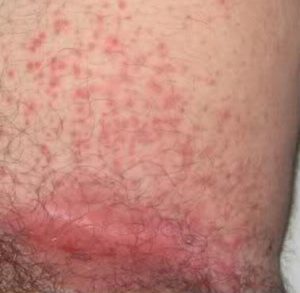
Regularly swimming, bathing or working in fresh water environments can also increase a person’s chances of contracting cercarial dermatitis. Some reported stimuli for penetration include linoleic and linolenic acids, which are found in sun creams. There has been no reported differences in susceptibility between genders, but children may become infected more often due to children being more likely to swim and bathe in shallow waters for long periods of time, where cercariae are common.

#PICTURES OF SWIMMERS ITCH RASH SKIN#
In contrast, cercarial dermatitis mainly affects skin areas that are uncovered. This infection occurs mainly in sea water and affects skin areas that are covered by clothing.

Since cercariae can only penetrate the upper skin layer (epidermis) but cannot enter the bloodstream, they die very quickly.Īnother type of dermatitis that has similar symptoms like cercarial dermatitis is sea-bather’s eruption, which is caused by larval forms of jellyfish. These larvae swim in water and search for suitable hosts (animals and birds) to infect and continue their lifecycle.Īlthough humans are not a suitable host, cercariae can penetrate intact human skin within a few minutes and trigger allergic reactions. These larvae grow and multiply inside snails, and infected snails release a different type of larvae (cercariae) into the water. This is why cercarial dermatitis mainly develops after an exposure to shallow water. These larvae then swim in water and infect a specific species of snail that live near the shoreline. Afterward, eggs hatch in water and release microscopic, free-swimming larvae. These eggs are generally found in fresh water, and less commonly, in salt water. The eggs produced by parasites are passed in the feces of infected animals and subsequently enter the water. However, frequent and long-term swimming in contaminated water can increase the intensity of allergic reactions and induce more severe inflammatory reactions if symptoms persist for more than three days and/or pus appears in the affected area, it is recommended to visit a skin specialist for medical help.Īdult schistosomes infect birds and small animals, such as ducks, gulls, swans, muskrats, and raccoons, and live in their bloodstream. It is noncontagious and cannot be spread from one person to another. In most cases, cercarial dermatitis does not require any medical attention, and symptoms gradually go away within few weeks.

These symptoms typically appear within minutes to days after swimming in contaminated water. What is Cercarial Dermatitis?Ĭercarial dermatitis, also called swimmer’s itch, is a type of skin rash caused by allergic reactions to the larvae of non-human schistosomes, a parasitic flatworm, that usually infect birds and small mammals.Ĭommon signs and symptoms of cercarial dermatitis include itchy skin, reddish pimples, and small blisters.


 0 kommentar(er)
0 kommentar(er)
